Create a Container Application
The Cloudonix REST API Data Models define a container application as:
The Container Application model stores an installation of a voice application that is hosted and served directly from Cloudonix servers. The software source code that executes the Cloudonix voice application is stored in Cloudonix servers and is executed on-demand by the Cloudonix APP.core voice application runtime - in a similar way to how "serverless applications" are hosted in Amazon Web Services Lambda or Azure Functions.
Click the Container Applications resource link to access the Container Applications View; the following screen will appear:
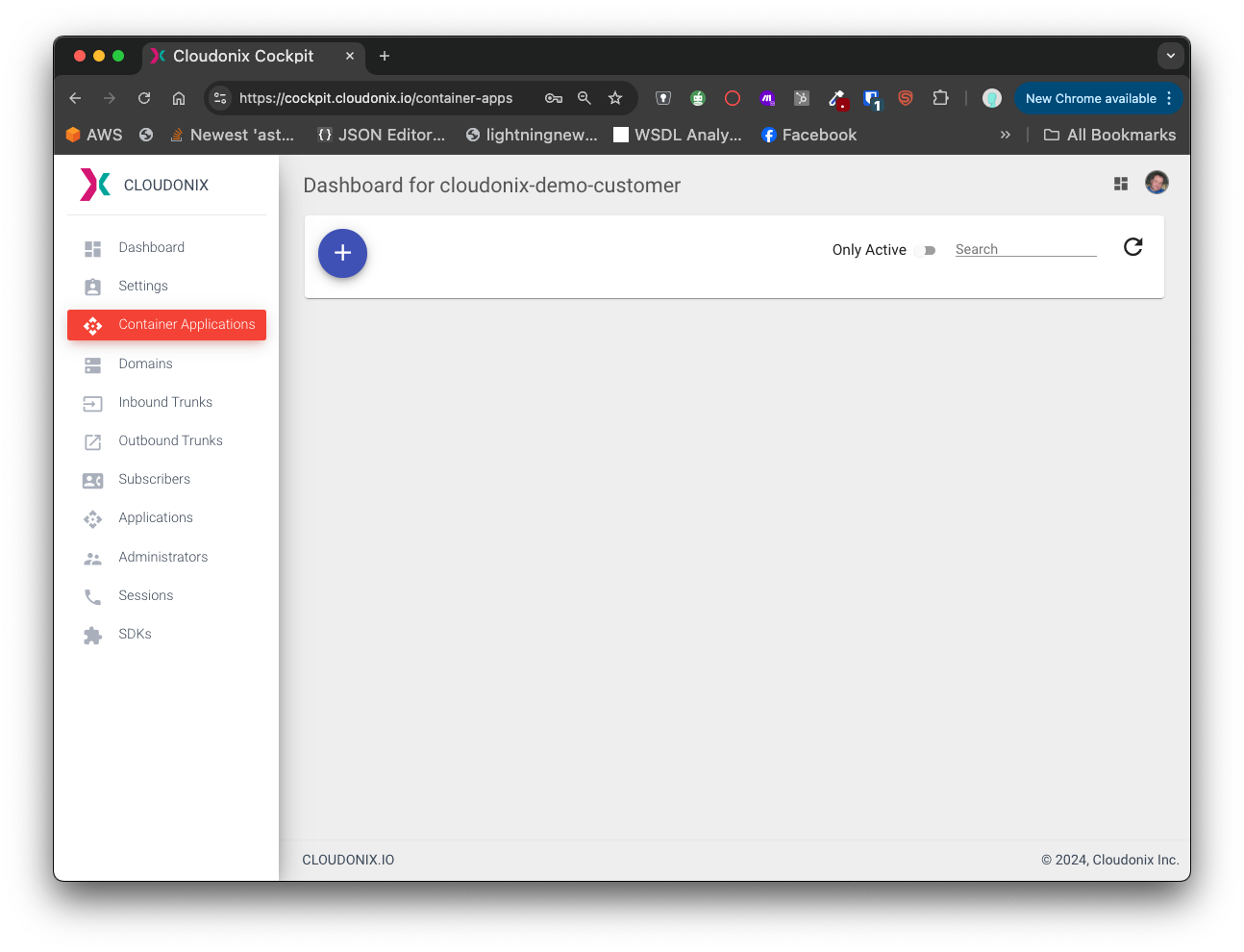
Click the purple Plus button to create a new Container Application; the following screen will appear:
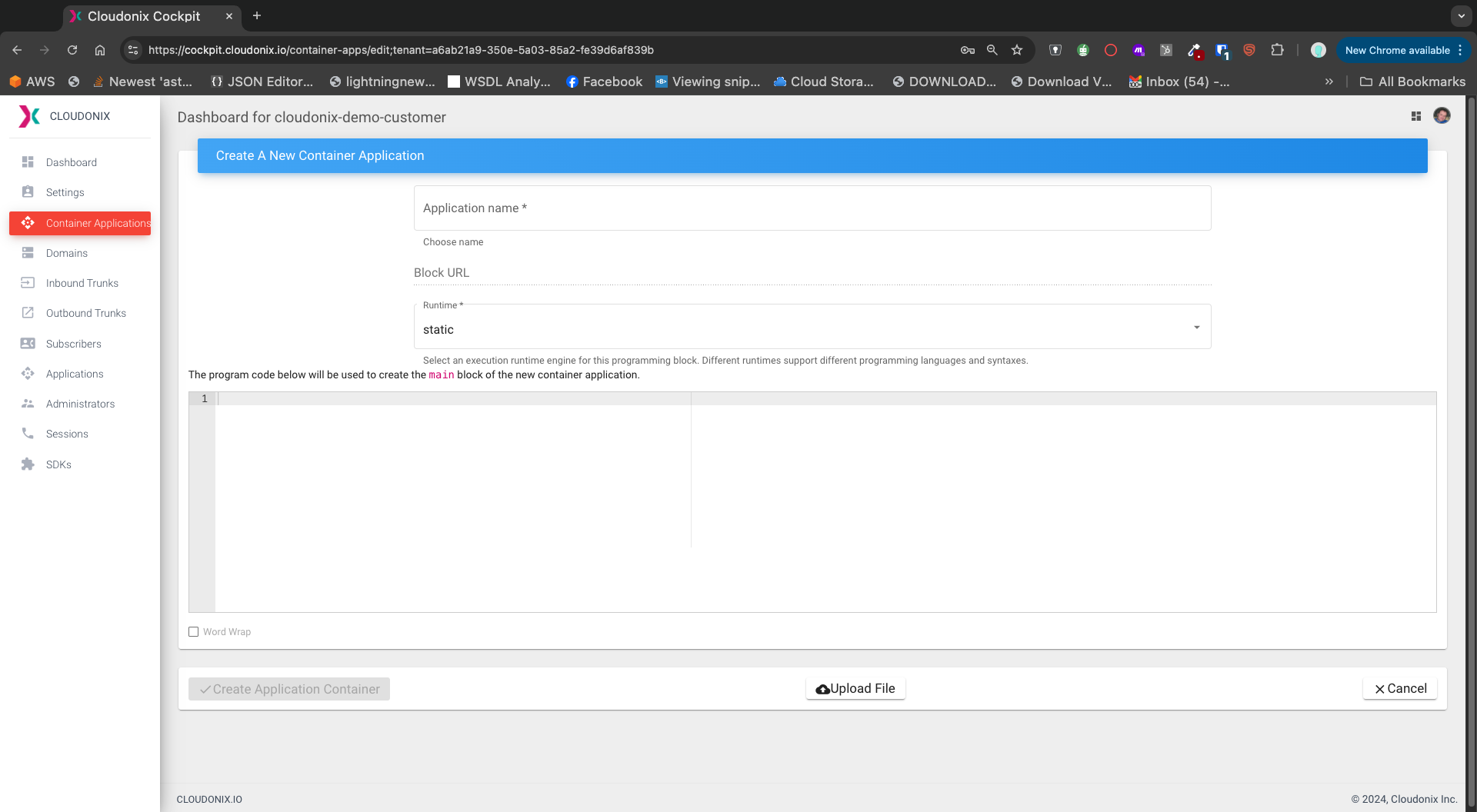
Container applications are based upon pre-defined Blocks, where each block may be implemented a different technology runtime. We recommend that you read more about container applications, in the Cloudonix REST API Data Models section.
For now, we shall create a simple container application, using a static runtime. Use the following information to fill the container application form:
| Title | Value | Description |
|---|---|---|
| Application Name | myFirstContainerApplication | A unique container application name. |
| Runtime | static | The container application runtime, to be used with the below code block. |
| Code Block | See below | The container application execution code. |
The Code Block
<Response>
<Pause length="2" answer="true" />
<Say>Hello World, it is great to be alive. Good bye now.</Say>
<Hangup />
</Response>
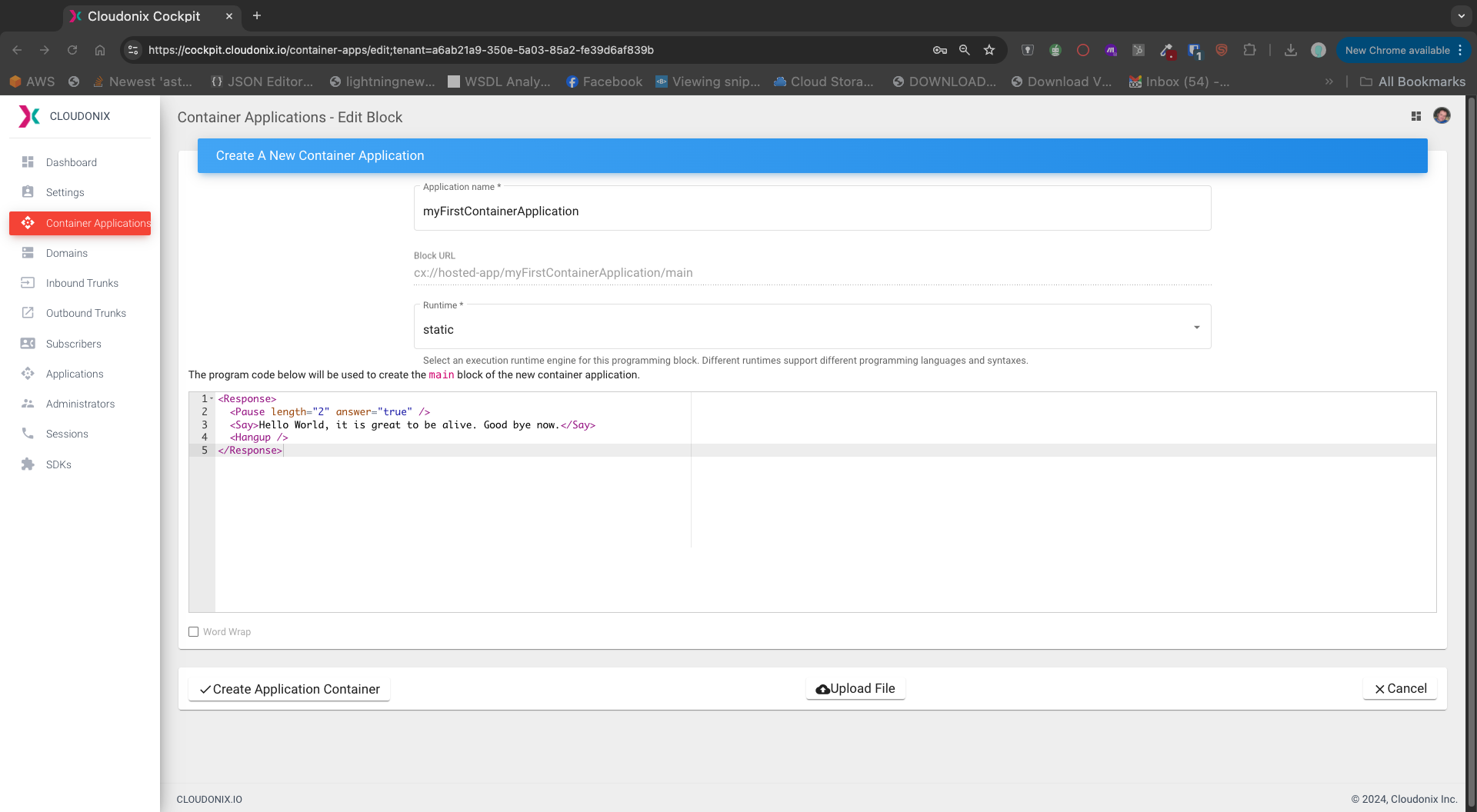
Once you've entered all information into the code editor, simply click the Create Application Container button to save your container application. The following screen will appear:
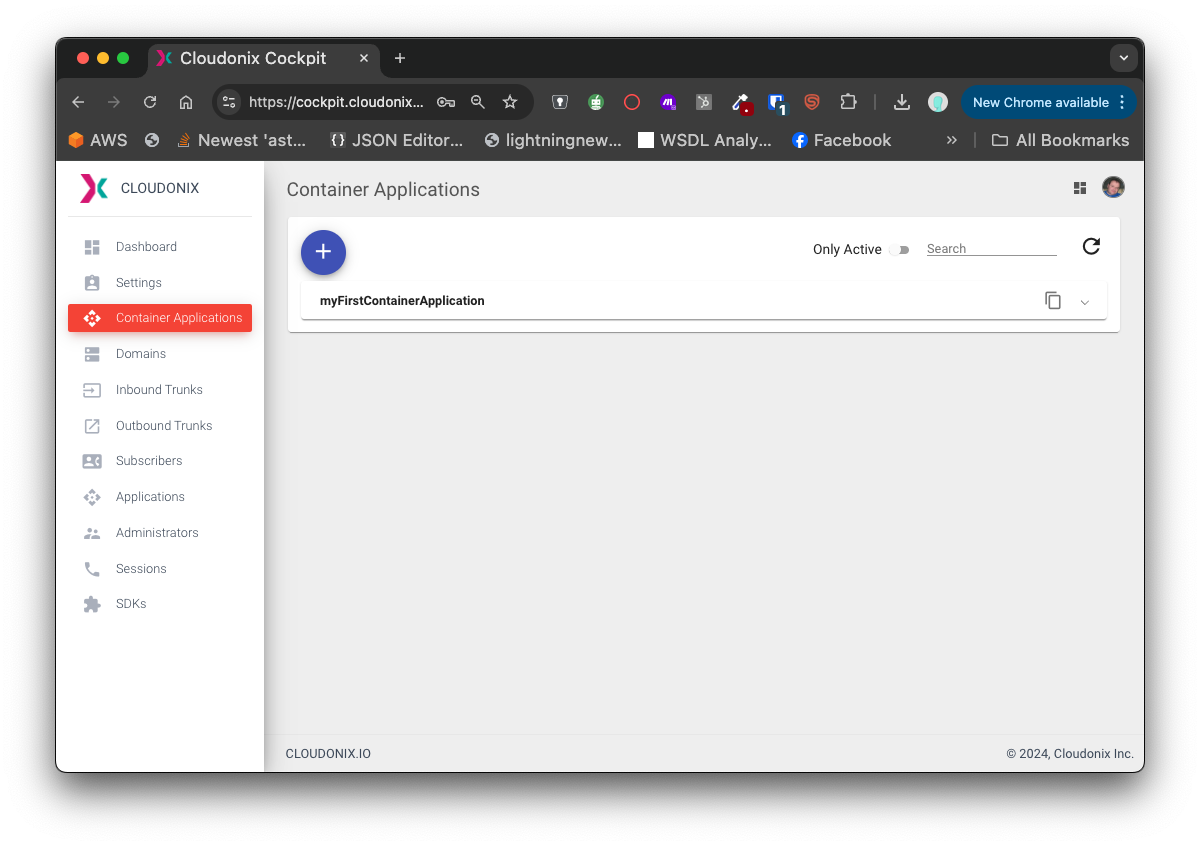
Click the application name to expand the code editor, which will show the main block and the associated CXML code:
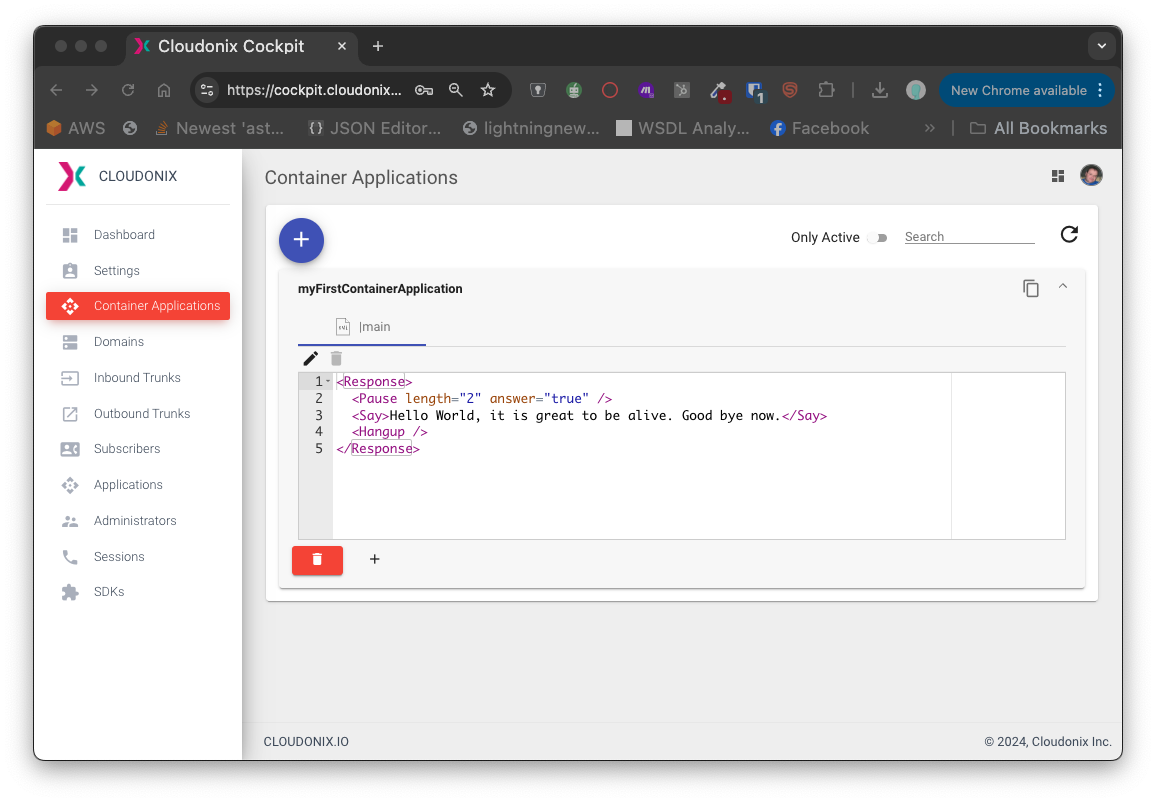
Congratulations, your container application is now ready to be attached to a voice application.
Here are some useful links, to learn more about the CXML markup language, and the Cloudonix REST API: